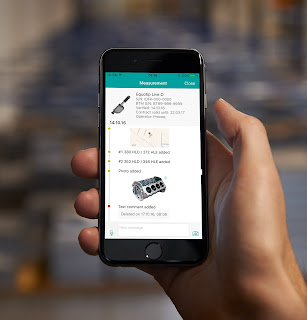NDT Equipment and the Pathway to Industry 4.0

It’s safe to say we are in the midst of a technological revolution. The fourth industrial revolution or Industry 4.0 as it is also known, is rapidly transforming the way businesses operate. Even NDT hasn’t been able to escape the advances in automation, “Internet of Things”, artificial intelligence, sensor technology, big data and analytics. Industry 4.0 promises to revolutionise business models and outcomes, meaning that the NDT we see today will likely not be the same as the NDT we see in the next decade. NDT and the Cloud NDT goes where the work is. In Australia that often means onto remote sites both inland and offshore. Quality control and collaboration become difficult when colleagues are thousands of kilometres apart. NDT technology that utilises cloud storage provides a unique solution to a problem that grows with an increase in workload and distance. One example of the integration of cloud storage into NDT is the Logbook used by Proceq’s live series of equipment...